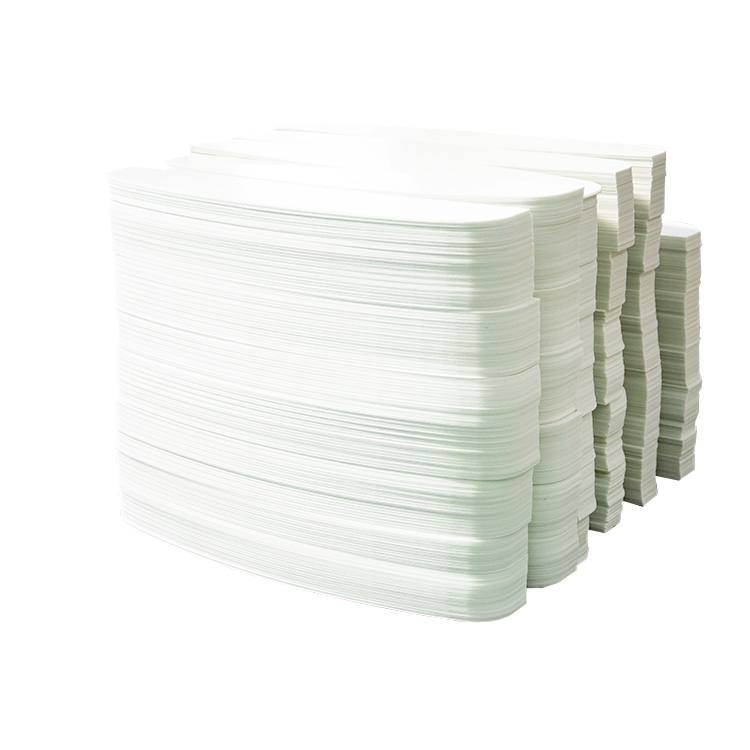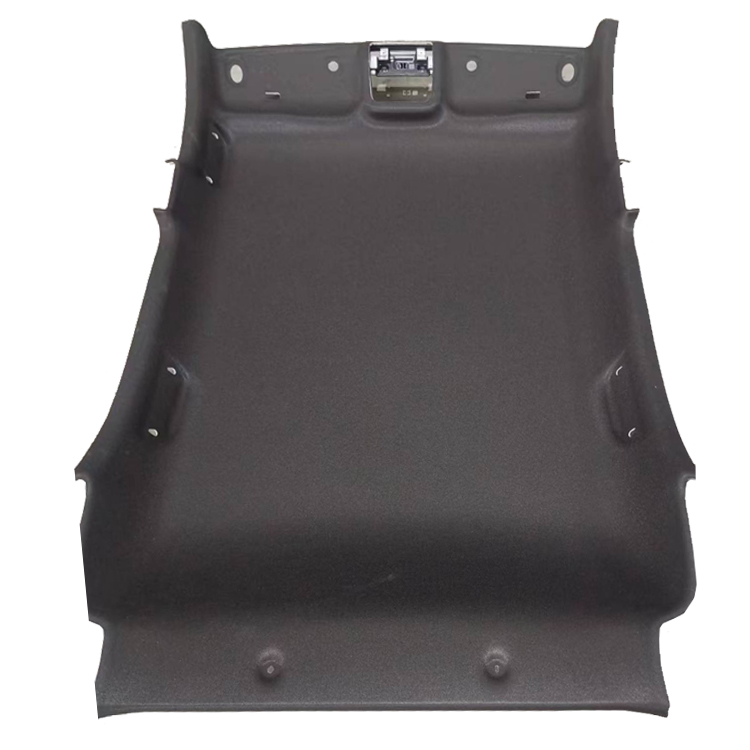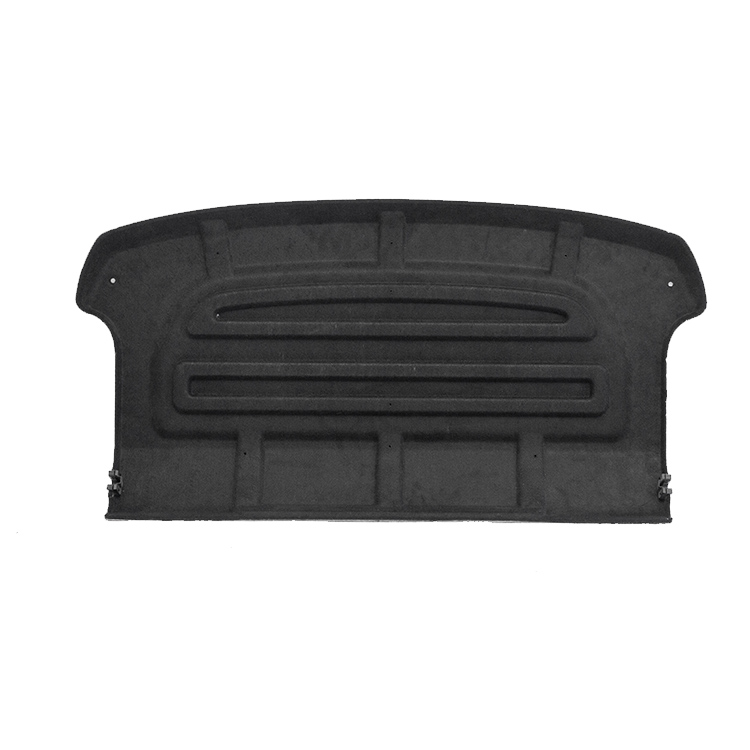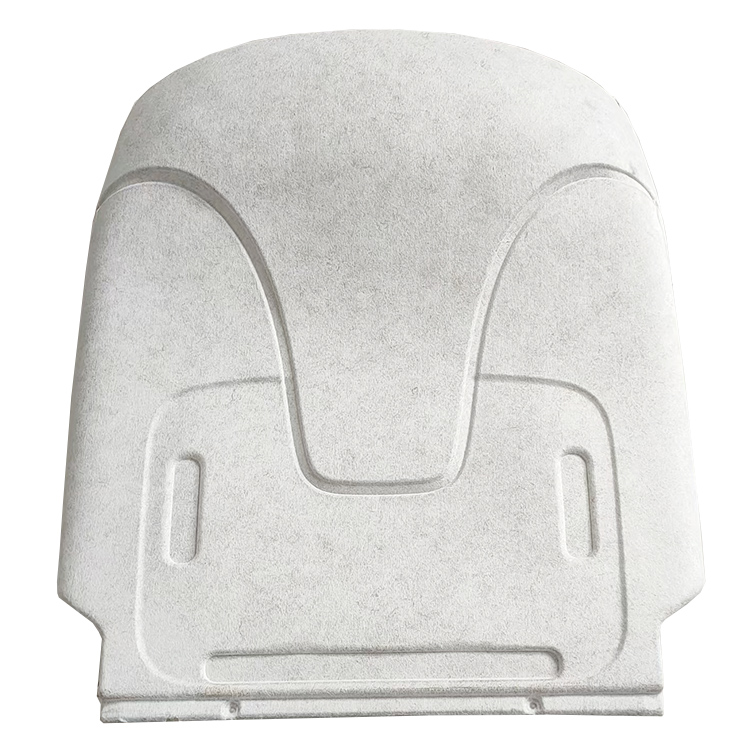GMT VS. FRP
First, let's clarify the core difference between the two:
- GMT (Glass Mat Thermoplastic): The matrix is a thermoplastic (e.g., PP, PA), which can be repeatedly softened by heating and solidified by cooling. This is a physical change.
- FRP (Fiber-Reinforced Plastic): The matrix is a thermosetting resin (e.g., unsaturated polyester, epoxy). Once cured by heat, its molecular structure forms irreversible cross-links. This is a chemical change.
This fundamental difference dictates their significant disparities in performance and processing methods.
Core Advantages of GMT over FRP
For a clearer understanding, let's use a table for a direct comparison:
|
Feature Comparison |
GMT (Glass Mat Reinforced Thermoplastic) |
Conventional FRP (Thermoset FRP) |
GMT Advantage Explained |
|
Matrix Resin |
Thermoplastic (e.g., PP, PA) |
Thermosetting Resin (e.g., Polyester, Epoxy) |
Physical change vs. chemical change—the fundamental difference. |
|
Production Efficiency |
Extremely high, suitable for automated, high-volume production. |
Lower, often relies on manual or semi-automated processes. |
A key requirement for high-volume industries like automotive. |
|
Cycle Time |
Very short (30-90 seconds). |
Longer (several minutes to hours). |
Fast production pace, high output per unit of time. |
|
Recyclability |
Recyclable; scrap and end-of-life parts can be reused. |
Extremely difficult to recycle; usually landfilled or incinerated. |
Environmental advantage, aligns with circular economy trends. |
|
Toughness / Impact Resistance |
Excellent, not prone to brittle fracture, absorbs significant impact energy. |
More brittle, prone to cracking and delamination upon impact. |
High safety, suitable for protective parts and chassis components. |
|
Design Integration |
High; complex features like ribs and inserts can be molded in one step. |
High, but may require more secondary processing. |
Reduces assembly steps, lowering total cost. |
|
Storage & Handling |
Stable, can be stored long-term at room temperature with no volatiles. |
Resin has a shelf life, requires cold storage, and emits VOCs. |
Workshop-friendly, simpler material management. |
|
Degree of Automation |
Very high, similar to metal stamping, easy to fully automate. |
Relatively low, especially with the hand lay-up process. |
Reduces labor costs and human error. |
|
Mold & Equipment Cost |
High initial investment (high-pressure press, steel molds). |
Initial investment can be low or high (hand lay-up molds are cheap). |
Unit cost drops rapidly with high-volume production. |
Detailed Explanation of GMT's Core Advantages
1. High Production Efficiency
This is GMT's most prominent advantage. Its manufacturing method is compression molding, a process very similar to metal stamping:
- Preheat the GMT sheet to a molten state.
- Quickly place it into the metal mold of a high-tonnage press.
- Close the mold under high pressure for cooling and solidification.
- Open the mold and remove the part.
The entire cycle can be as short as 30-90 seconds. In contrast, the traditional hand lay-up process for FRP takes hours, and even faster methods like RTM (Resin Transfer Molding) typically have cycle times of several minutes or more. This efficiency makes GMT extremely suitable for industries like automotive, which have annual production volumes in the hundreds of thousands or even millions of parts.
2. Excellent Toughness & Impact Resistance
The thermoplastic matrix gives GMT excellent toughness. When subjected to impact, GMT material undergoes plastic deformation to absorb energy, rather than suffering a brittle fracture (i.e., "shattering") like thermoset FRP.
Application Examples: Automotive engine undershields, front-end modules, seat structures, and battery enclosures. These components need to withstand impacts from road debris or absorb energy in a collision, making GMT's toughness a perfect choice. In contrast, an FRP shield is more likely to crack upon impact.
3. Recyclable & Environmentally Friendly
This is a major advantage that aligns with the global trend toward environmental protection.
- Production Scrap: Off-cuts generated during GMT production can be shredded and reused directly or blended with other materials for injection or compression molding.
- End-of-Life Products: Old GMT parts can be recovered, ground down, and reused as raw material.
- Conventional FRP: Recycling is very difficult and remains a major challenge for the composites industry. The typical disposal method is landfilling, which puts pressure on the environment.
4. High Design Integration
GMT allows for the molding of highly complex structures in a single step, including features like stiffening ribs, mounting holes, metal inserts, and nuts. This significantly reduces subsequent processes like drilling, bonding, and assembly, which not only improves production efficiency but also lowers the overall part cost and weight.
GMT's Limitations and Areas Where FRP Excels
Of course, GMT is not superior to FRP in every aspect. To have a comprehensive understanding, it's important to know its limitations:
- Mechanical Strength and Stiffness: For applications requiring extremely high strength and stiffness (e.g., in aerospace, race car bodies), thermoset composites reinforced with continuous fibers (also a type of FRP) generally offer superior performance. GMT uses chopped or continuous fiber mats with randomly distributed fibers, so its absolute strength and stiffness are lower than composites with aligned, continuous fibers.
- Heat Resistance: Standard GMT (e.g., PP-based) has lower heat resistance than high-performance thermoset resins like epoxy. Thermoplastic materials soften at high temperatures. However, this can be addressed by using high-performance thermoplastic matrices like PEEK, but the cost increases dramatically.
- Molding of Complex/Large Components: For extremely large components (e.g., ship hulls, wind turbine blades) or those with very low production volumes (e.g., custom parts), FRP processes like hand lay-up or vacuum infusion offer greater flexibility and cost-effectiveness, as they do not require expensive high-pressure equipment and steel molds.
- Initial Investment Cost: A GMT production line requires high-tonnage presses and precision steel molds, leading to a substantial initial investment in equipment and tooling. This means it is only suitable for high-volume production; otherwise, the unit cost will be very high.
Summary
In summary, the core advantages of GMT compared to traditional thermoset FRP are:
- Speed and Efficiency: Born for large-scale, automated production, its cost-effectiveness becomes prominent as production volume increases.
- Toughness and Safety: Highly resistant to impact and less prone to brittle fracture, making it more suitable for protective and load-bearing structural parts.
- Environmental Friendliness and Sustainability: The material is recyclable, aligning with the future direction of green manufacturing.
Therefore, the choice between GMT and FRP depends critically on the product's application scenario, production volume, performance focus (toughness vs. stiffness), and cost budget. GMT is an ideal choice for automotive lightweighting and high-efficiency production, while FRP continues to hold its advantage in fields that require high stiffness, customization, extra-large dimensions, or low-volume manufacturing.




